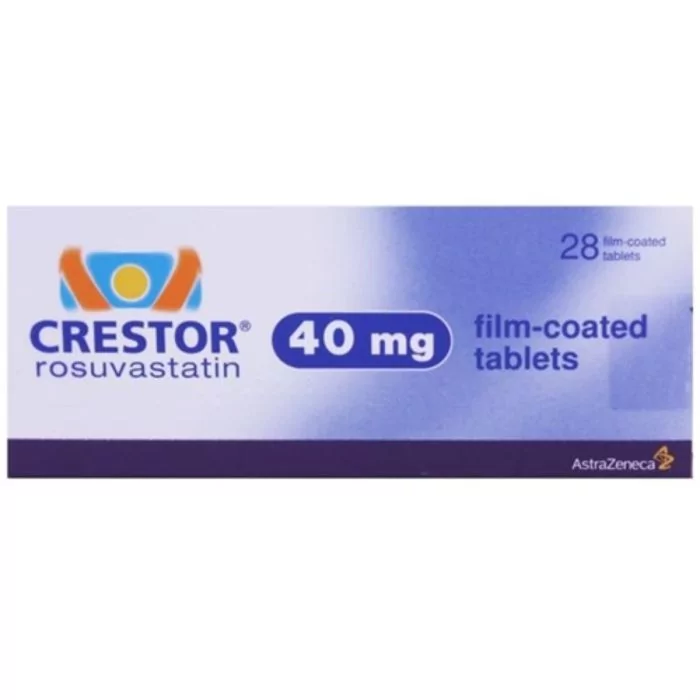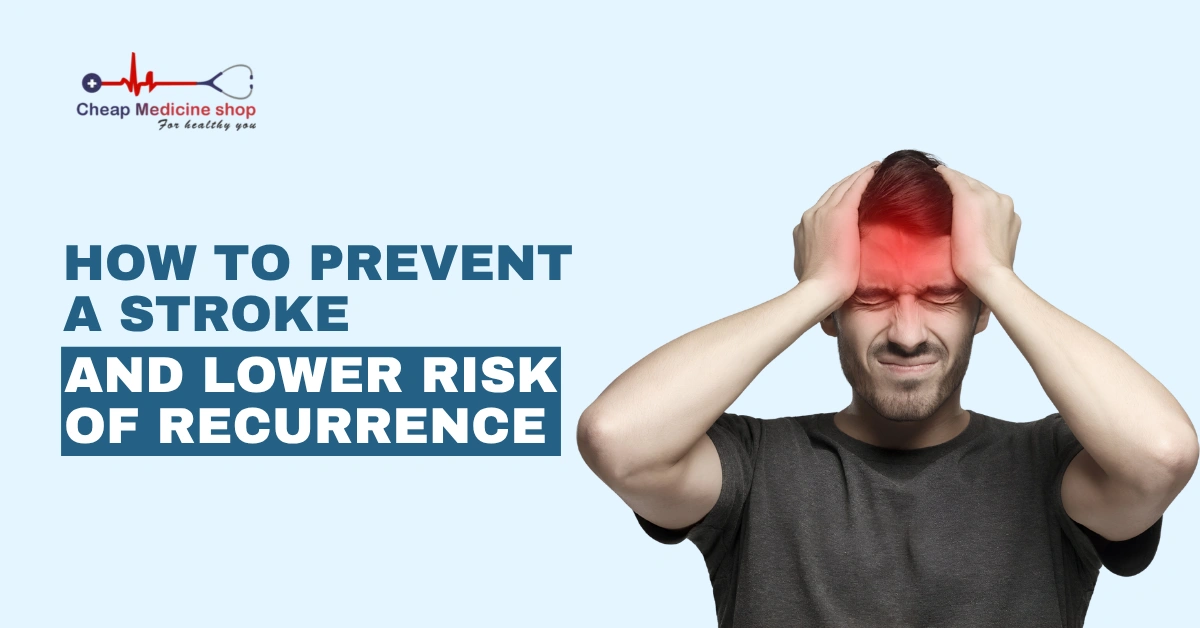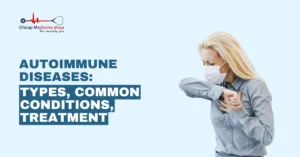A Stroke happens when blood flow to the brain is blocked by a clot or a blood vessel bursts, cutting off oxygen and damaging brain cells. It is a major health concern worldwide, with the US alone accounting for 795,000 cases yearly.
Risk factors of this CerebroVascular Accident (CVA) include poor diet, inactivity, Obesity, smoking, High Blood Pressure and Diabetes. Fortunately, managing these conditions through a healthy diet, regular physical activity, and medical care can significantly reduce your risk of recurrence.
Whether to avoid a first Mini-Stroke or a second, more serious attack, this guide explains proven ways to prevent Stroke. So, quitting smoking, limiting alcohol and reducing fatty foods will help you take control of your cardiovascular as well as cerebrovascular health for years to come.
In addition to lifestyle changes, your doctor might also prescribe supplements like magnesium and potassium to prevent Morning Strokes. This article also discusses standard medical options to prevent the recurrence of a brain attack.
How to prevent a Stroke: Life’s Essential 8
The first question that arises is “Can you prevent a Stroke?” The answer is yes because they don’t happen overnight. They often develop silently over the years due to High Blood Pressure, poor diet, High Cholesterol, or chronic stress. The good news is that most Strokes are preventable.
The Life’s Essential 8 framework by the American Heart Association offers a clear roadmap to reduce Stroke risk through everyday habits. Backed by the Stroke Association UK and CDC (Centers for Disease Control and Prevention), adopting even small changes in these areas can make a measurable difference in reducing your risk.
In the following sections, we’ll break down these essentials into simple, actionable Stroke prevention tips you can start today.
Save up to 90% on your medicine bills

Telma 40 mg

Lipvas 20 mg

Crestor 20 mg Tablet

Tonact EZ 20+10 mg
1. Eat a healthy and balanced diet
Processed foods and unhealthy fats raise blood pressure and cholesterol, both major causes of Stroke. On the other hand, a heart-healthy diet with foods to control blood pressure will support vascular health and reduce inflammation.
To begin with,
- Limit fried foods, processed meats, caffeine and sugary drinks that raise blood pressure.
- Switch to whole grains like barley, quinoa, oats or brown rice.
- Potassium and B vitamins from leafy greens, nuts, bananas, and whole grains lower blood pressure and protect arteries.
- Use herbs and lemon to flavor food instead of salt.
Follow the Mediterranean diet or DASH diet (Dietary Approaches to Stop Hypertension) as both have been well studied for brain and heart health.
2. Exercise regularly to improve blood flow
Exercise helps lower blood pressure, manage weight, control Diabetes, and improve cholesterol levels. Studies indicate that people who exercise for 150 minutes in moderation or 75 minutes of vigorous aerobic activity weekly lower their Stroke risk by up to 27%.
You don’t necessarily need intense workouts to get results; simply begin to:
- Take the stairs instead of the elevator or walk your dog twice daily.
- Start brisk walking 30-45 minutes per day, 5 days each week. Walk at a pace that makes you breathe faster but still allows light conversation.
- Find something enjoyable, like dance, yoga, or energetic housework and spread it out over several days, 20-30 minutes, 2 to 3 times a week.
3. Quit smoking, limit alcohol and avoid tobacco
These are two of the strongest preventable causes of Stroke. Heavy alcohol use disrupts circulation and can trigger Atrial Fibrillation (AFib or irregular heartbeat), a major CVA risk factor. On the other hand, cigarette smoke decreases the amount of oxygen in your blood. The heart has to put in more effort to pump blood to all body parts, including the brain. This makes your blood more likely to clot, tripling your risk of Stroke.
You can join the “Quit Smoking” campaign by the Centers for Disease Control and within 1 year, your risk of Stroke will drop significantly. Additionally, try Nicotine patches or ask your doctor about alcohol-drug replacement therapy.
4. Get adequate, healthy sleep
Since sleep helps regulate blood pressure, hormone balance, and brain health, people who consistently get less sleep (less than 5-6 hours daily) are at a 15% higher risk of developing Stroke, Obesity, Diabetes and Hypertension. So,
- Aim for 7 to 8 hours of restful sleep every night.
- Try to avoid alcohol and caffeine at least 4 hours before bed for undisturbed rest.
- Go to bed and wake up at the same time daily to strengthen your Circadian rhythm (sleep wake cycle).
- Keep your bedroom screen-free, quiet, and dark to improve sleep quality.
5. Maintain a healthy weight
Obesity is linked to a 50% higher risk of brain attack compared to normal-weight individuals, as it strains the heart and clogs blood vessels. But the good news is that losing as little as 5-10 pounds (or 5-10% of body weight) can significantly lower your risk.
Some of the best habits for weight management include:
- Practice portion control and mindful eating.
- Reduce sugary drinks and packaged snacks.
- Switch from high-fat dairy products, like yogurt and milk, to their low-fat versions.
- Combine diet changes with daily activity like walking, cycling, or yoga.
Talk to a dietitian for a tailored plan or join a weight loss program. Track your progress weekly and celebrate wins, such as improved energy and reduced fatigue.
6. Manage blood pressure and stress
High Blood Pressure, or Hypertension, is the number one controllable risk factor for Stroke. Chronic stress compounds this risk by raising cortisol (stress hormone) and blood pressure levels. Thus, proactively managing Hypertension and stress is crucial for Stroke prevention.
To maintain your blood pressure,
- Reduce your sodium intake and processed foods.
- Take prescribed BP medications consistently and monitor BP regularly.
- Practice deep breathing, journaling or meditation daily.
If your BP is consistently over 140/90 mmHg, you may need to work with your doctor to adjust or start blood pressure medications, if required.
7. Control cholesterol levels
Too much LDL (Low Density Lipoprotein, also known as bad cholesterol) can restrict blood flow to the brain and cause CVA by building up plaque in your arteries. To keep cholesterol in check, you need a combination of diet, exercise and medical support.
- Limit saturated fats (butter, fatty meats, full-fat dairy) and avoid trans fats.
- Eat cholesterol-friendly (containing High Density Lipoprotein or HDL) foods like oats, beans, flaxseeds, walnuts, and olive oil.
- Include fatty fish like salmon or sardines twice a week for Omega-3s.
- Snack on fiber-rich fruits such as apples, pears, and berries.
Additionally, get a blood lipid profile test done annually and take Rosuvastatin if prescribed.
8. Manage Diabetes
Diabetes or poorly controlled blood sugar increases your risk of CerebroVascular Accidents by up to 4 times. It can lead to narrowed arteries (Atherosclerosis) or damage blood vessels. Thus, keeping glucose within a healthy range is vital for preventing both initial and recurrent Strokes.
Begin to:
- Follow a low-glycemic diet with whole grains, legumes, and non-starchy vegetables.
- Avoid refined carbs, sugary drinks, and processed foods.
- Stay physically active, as walking after meals helps control blood sugar spikes.
- Take Diabetes medications or insulin as prescribed and monitor your blood sugar levels regularly.
These practical steps work together to reduce your risk of Stroke significantly.
How to prevent a second Stroke
Having a Stroke does increase your risk of another, with about 1 in 4 survivors experiencing another brain attack, often within five years. The good news is that recurrence can be significantly reduced by combining medications with lifestyle adjustments discussed above.
Additionally, in this section, we have outlined both common supplements and medications that support brain and heart health. These are prescribed to patients, mainly to prevent the recurrence of Stroke.
1. Supplements: Vitamins, minerals and herbs
In addition to medications, certain supplements may reduce the risk of CVA and prevent Stroke in the future, especially by addressing nutrient deficiencies. These include B vitamins (B6, B9/folate, and B12), magnesium and potassium, vitamin D and omega-3 fatty acids.
Herbal supplements like garlic or turmeric may have complementary benefits, but should be used only with medical approval to avoid potential interactions.
2. Prescription medications
Certain medications have been shown to significantly reduce the chances of a second Stroke, depending on the type, cause and risk factors. Antiplatelet medications such as Aspirin, Clopidogrel (Plavix), or Aspirin combined with Dipyridamole, are commonly prescribed to prevent platelets from sticking together and blocking blood flow to the brain.
In contrast, anticoagulants (prevent blood clots from forming) like Warfarin or Apixaban (Eliquis) are prescribed if you have AFib.
Statins and blood pressure medicines (Beta-blockers, or Diuretics) are recommended for all Ischemic Stroke (due to clot) patients to lower cholesterol and stabilize BP to reduce future risk by up to 25%.
The treatment plan is always personalized and regularly reviewed by doctors to balance Stroke prevention benefits with the risk of bleeding or other side effects.
How to prevent a Stroke while sleeping
While brain attacks can happen at any time, many occur during sleep or are only noticed upon waking. These are called Wake-Up Strokes and are often linked to underlying risk factors such as High Blood Pressure, Atrial Fibrillation, Sleep Apnea, Obesity or poor nighttime habits.
These account for about 20% of all acute Ischemic Strokes and frequently happen between 6 a.m. and 12 p.m., a time of day linked to an increased risk of vascular events. Additionally, people with untreated Obstructive Sleep Apnea are twice as likely to experience a Stroke.
A Norwegian study of 2022 found that Wake-Up Strokes (WUS) and Unknown-Onset Strokes (UOS) tend to be more severe and carry higher mortality rates compared to known-onset ones.
In addition to Life’s essential 8, follow these tips to prevent a Stroke while sleeping:
- Sleep on the left or right side to improve blood circulation and reduce the risk of Stroke.
- Try fetal and log positions that support better breathing and circulation.
- If diagnosed with Sleep Apnea, use CPAP therapy as prescribed to maintain open airways during sleep.
- Maintain a fixed sleep routine with consistent, good-quality sleep lasting 7 to 9 hours to support cardiovascular health.
Conclusion
Strokes can be life-changing, but up to 80% of these are preventable with the right approach. Whether you wish to lower your first-time risk or aim to prevent a second Stroke, the key lies in long-term consistency. A balanced diet, regular physical activity, proper sleep, and stress management form the backbone of your Stroke prevention strategy.
In addition to the Life’s Essential 8 discussed above, doctors may recommend targeted supplements, such as magnesium, potassium, B vitamins, and medications like statins, to preserve your cerebrovascular health. This becomes necessary, especially for higher-risk individuals like those above 55 years of age and patients with a history of High Blood Pressure and Diabetes.
In essence, preventing or avoiding a brain attack, including a morning stroke, is all about making smart, manageable choices every day. Loved ones can also help with maintaining routines, spotting warning signs, and encouraging a healthy lifestyle. Small habits add up; choose one area to start and build from there collectively.
Frequently Asked Questions
Can drinking water help prevent a Stroke?
Yes, staying hydrated supports healthy blood flow and reduces the risk of blood clots. Studies suggest that drinking at least 2 liters of fluids daily may help with secondary prevention of Stroke. But avoid overhydrating if you have kidney or heart issues.
Does Eliquis prevent Strokes?
Yes, Apixaban (Eliquis or Apigat) is an anticoagulant that prevents harmful clots from forming and lowers the risk of Stroke in men and women with Atrial Fibrillation (AFib). Eliquis is generally safer but still carries a risk of bleeding, so always follow your cardiologist’s instructions on usage and dosage.
Can high calcium cause a Stroke?
Yes, excessive calcium supplements, especially without Vitamin D, may raise the risk of Ischemic Stroke by causing blood plaque or clots. Elevated calcium levels in the blood are also linked to worse outcomes. A balanced intake, ideally through food sources, is recommended to avoid complications.
Does magnesium help prevent Stroke?
Yes, magnesium is linked to reduced risk of brain attacks. Studies show that higher magnesium intake (about 100 mg more daily) reduces the risk of Ischemic Stroke (due to a blood clot) by 8 to 11%. However, more clinical trials are needed to study its dose-dependent effects.
Does taking Aspirin prevent a Stroke?
Yes, low-dose Aspirin can prevent an Ischemic Stroke risk by reducing clot formation. It is particularly useful for secondary prevention after a prior Stroke or heart attack. The best time to take Aspirin is once daily in the evening or at night. Since it carries an increased risk of bleeding, use only under medical supervision.
What is the FAST test for Stroke?
FAST stands for Face, Arm, Speech, Time. It means to look for facial drooping, arm weakness, or slurred speech in a person if you suspect a Stroke. If these symptoms appear suddenly, it’s time to call emergency services immediately.
Cheap Medicine Shop only refers to credible, authoritative sources for our content. If you’re curious about how we ensure the integrity of our content, we encourage you to read our Content Information Policy.














